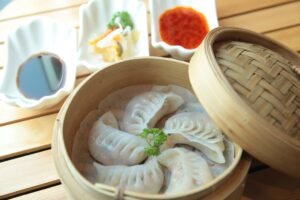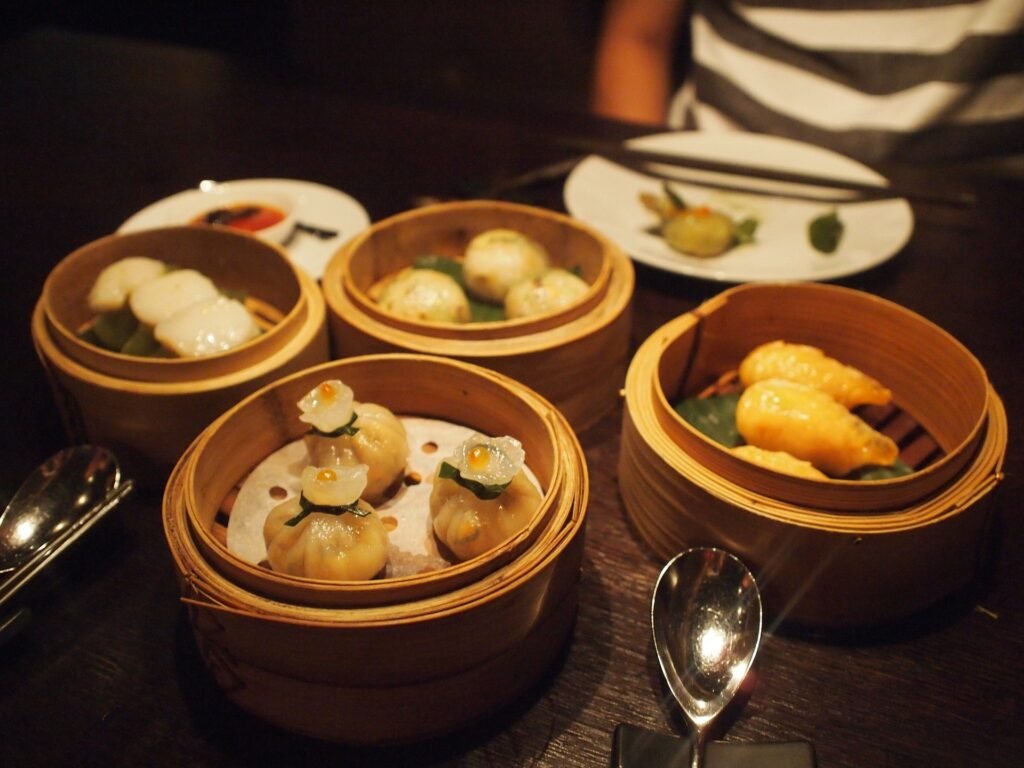Table of Contents
ToggleIntroduction to Chinese Cuisine and Language
Chinese food has long been a vital part of Chinese culture due to its lengthy history and variety of regional cuisines. The language system in China is both sophisticated and old, in addition to its gastronomic marvels. A strong bond between these two essential aspects of the culture dates back many years.
Chinese food has developed over thousands of years, influenced by several emperors and political upheavals. Language has also undergone tremendous change through time, with modern Chinese made up of various regional dialects.
Language and Culinary Terminology
The vocabulary used to describe Chinese food is extensive and varied, including various words to describe ingredients, preparation methods, and flavors.
Ingredients
Chinese cuisine is known for its vast array of ingredients, many of which have unique names in Chinese. For example, tofu is called “dòufu” (豆腐), and bok choy is referred to as “báicài” (白菜).
Techniques
Various cooking techniques have specific names in Chinese.
炒chǎo – stir fry
煎jiān – pan- fry
炖dùn – stew
炸zhà – deep fry
焯chāo – blanch
煨wēi – simmer
蒸zhēng – steam
烤kǎo – roast
Flavors
The five primary tastes in Chinese food—sweet, sour, bitter, spicy, and salty—are given special attention. The language represents these flavors, each with a distinct personality and sound. It is crucial to balance these flavors in Chinese cuisine, and language idioms reflect this.
酸suān – sour
甜tián – sweet
苦kǔ – bitter
辣là – spicy
咸xián – salty
淡dàn – tasteless
麻má – numb
香xiāng – appetizing
鲜xiān – fresh
油yóu – greasy
涩sè – puckery
The Connection Between Chinese Cuisine and Language
Food-Related Idioms and Proverbs
The Chinese language and gastronomy are linked using proverbs and idioms relating to food. Many of these sayings have deeper meanings or teach valuable lessons. For example, “yī wǔ jí chéng” (以吾济诚) means “sincerity can cook stones,” which means that good intentions can triumph over obstacles.
Poetic Language in Menus and Recipes
Chinese menus and recipes frequently use poetic language, with dish names that inspire feelings and images. For instance, a dish named “yú xiāng ròusī” (鱼香肉丝), which doesn’t contain fish, translates to “fish-fragrant shredded pork.” The name makes a poetic connection between the taste and the language by referencing the flavor profile frequently employed in fish meals.

Regional Variations and Language
Due to China’s enormous size and varied topography, there are many different regional cuisines, each with flavor profiles, ingredients, and cooking methods. Regional differences are also present in the regional dialects and tongues used nationwide.
Northern Chinese Cuisine
Hearty flavors, wheat-based mainstays like noodles and dumplings, and a focus on meat, especially lamb and hog, are characteristics of Northern Chinese cuisine. The dialect that is most commonly spoken in this area is Mandarin, and the culinary expressions and terms used there frequently reflect the regional food culture.
Southern Chinese Cuisine
Cantonese and Hakka cuisines are examples of southern Chinese cuisines that use fresh ingredients, seafood, and subtle flavors. This area’s dialects, including Cantonese and Hokkien, have distinctive culinary expressions and phrases that encapsulate their local food cultures.
Eastern Chinese Cuisine
The emphasis on seafood and affinity for sweet and sour flavors are two characteristics of Eastern Chinese cuisine, including Shanghainese and Zhejiang cuisine. The culinary language used in regional dialects like Shanghainese and Wenzhou reflects regional food customs and culture.
Western Chinese Cuisine
The robustness, spiciness, and emphasis on spicy ingredients like chili peppers and garlic are hallmarks of Western Chinese cuisines like Sichuan and Xinjiang. Different culinary phrases and expressions in the regional dialects, like Sichuanese and Uighur, highlight the distinctive features of each particular food.
Conclusion
Chinese language and cuisine are inseparably linked, with each aspect of the culture mirroring the other differently. The rich and varied culinary terminology demonstrates the depth and complexity of the Chinese language, from the historical context to the regional variances. Chinese idioms and proverbs that refer to food are evidence of the value of food in Chinese culture. At the same time, poetic language in menus and recipes gives the culinary experience a creative edge. Understanding the relationship between Chinese food and language provides a unique cultural perspective. It deepens one’s understanding of the artistry and talent required to create these culinary delights.
Click here to REGISTER for our SUMMER CAMP in 2023!
Learn about our Internship Program in China.
Learn about holidays in China in 2023.
Get free Chinese learning resources.







